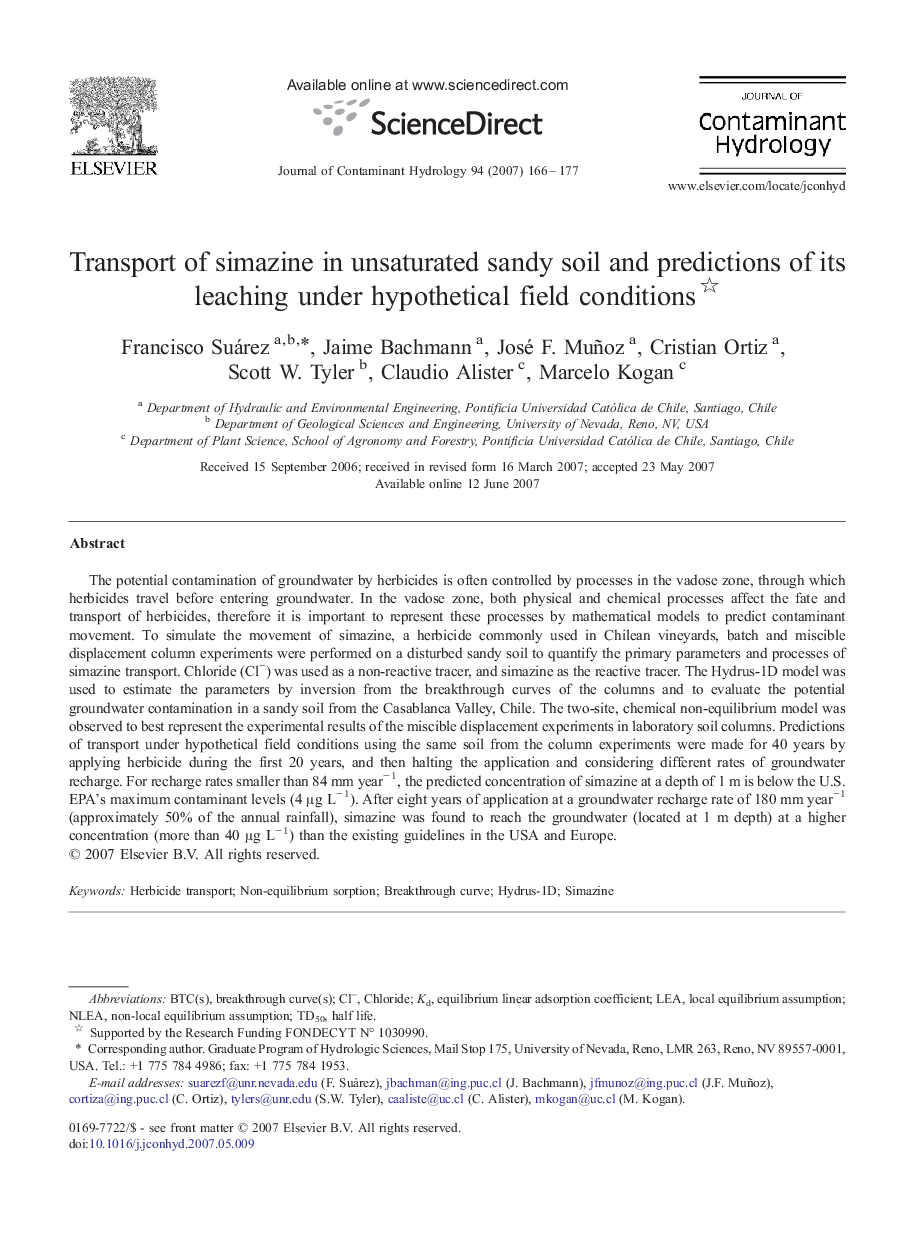| Article ID | Journal | Published Year | Pages | File Type |
|---|---|---|---|---|
| 4547519 | Journal of Contaminant Hydrology | 2007 | 12 Pages |
Abstract
The potential contamination of groundwater by herbicides is often controlled by processes in the vadose zone, through which herbicides travel before entering groundwater. In the vadose zone, both physical and chemical processes affect the fate and transport of herbicides, therefore it is important to represent these processes by mathematical models to predict contaminant movement. To simulate the movement of simazine, a herbicide commonly used in Chilean vineyards, batch and miscible displacement column experiments were performed on a disturbed sandy soil to quantify the primary parameters and processes of simazine transport. Chloride (Clâ) was used as a non-reactive tracer, and simazine as the reactive tracer. The Hydrus-1D model was used to estimate the parameters by inversion from the breakthrough curves of the columns and to evaluate the potential groundwater contamination in a sandy soil from the Casablanca Valley, Chile. The two-site, chemical non-equilibrium model was observed to best represent the experimental results of the miscible displacement experiments in laboratory soil columns. Predictions of transport under hypothetical field conditions using the same soil from the column experiments were made for 40 years by applying herbicide during the first 20 years, and then halting the application and considering different rates of groundwater recharge. For recharge rates smaller than 84 mm yearâ 1, the predicted concentration of simazine at a depth of 1 m is below the U.S. EPA's maximum contaminant levels (4 μg Lâ 1). After eight years of application at a groundwater recharge rate of 180 mm yearâ1 (approximately 50% of the annual rainfall), simazine was found to reach the groundwater (located at 1 m depth) at a higher concentration (more than 40 μg Lâ 1) than the existing guidelines in the USA and Europe.
Keywords
Related Topics
Physical Sciences and Engineering
Earth and Planetary Sciences
Earth-Surface Processes
Authors
Francisco Suárez, Jaime Bachmann, José F. Muñoz, Cristian Ortiz, Scott W. Tyler, Claudio Alister, Marcelo Kogan,
